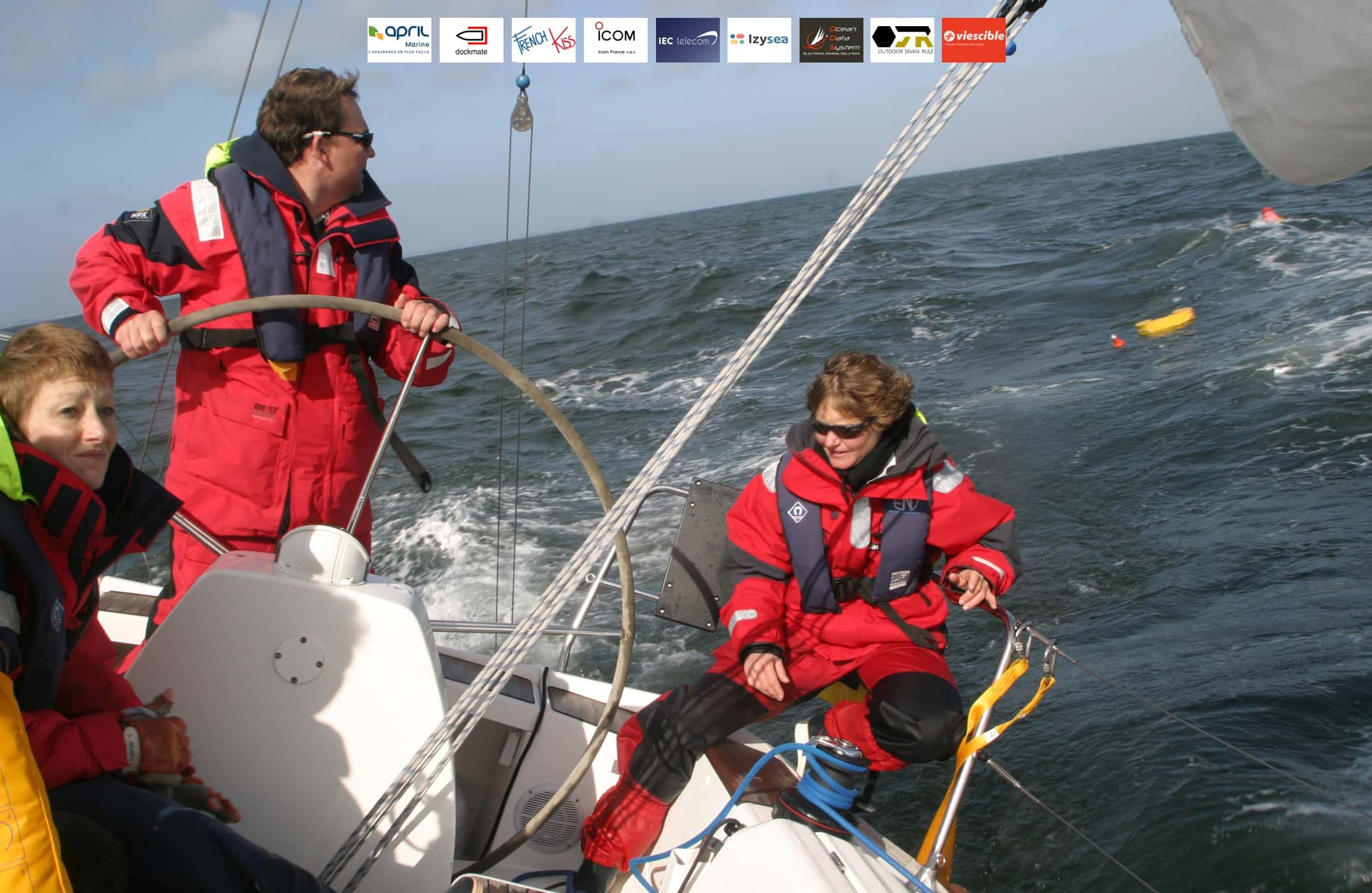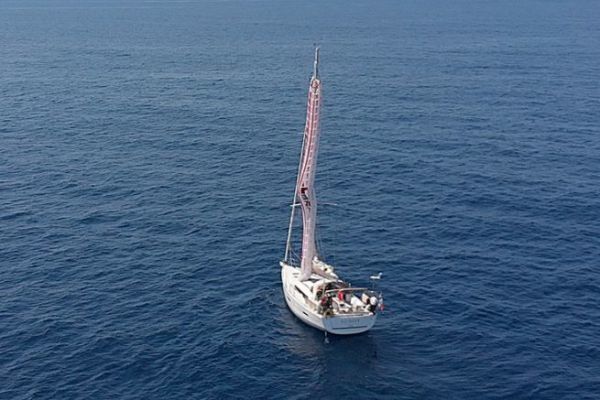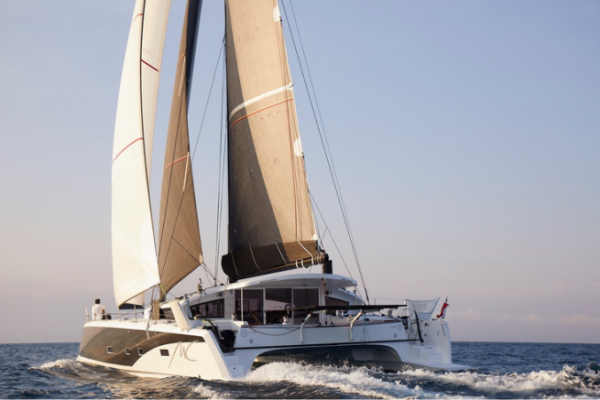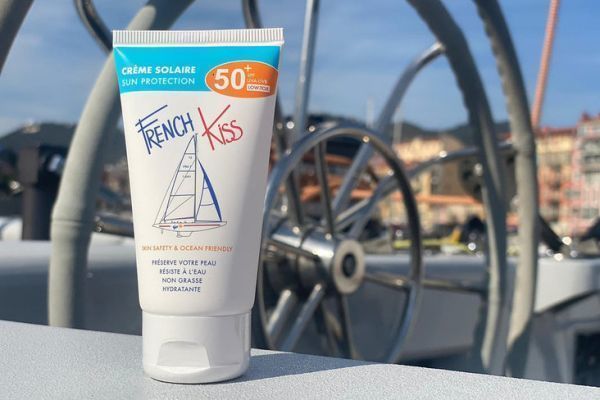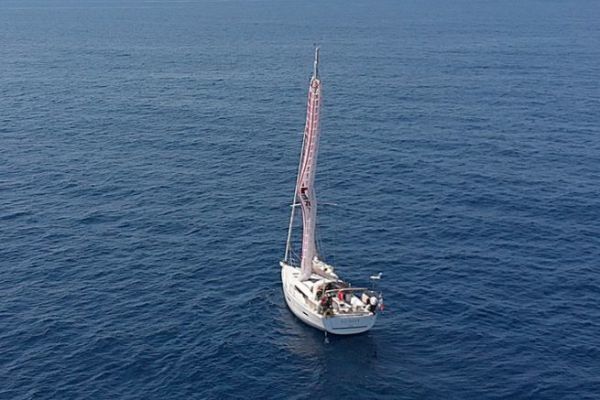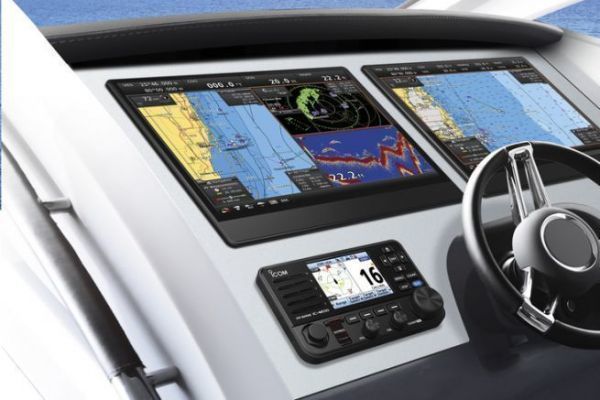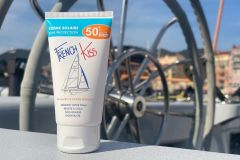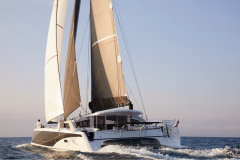How to climb the mast safely at sea? You don't have to be a Vendée Globe competitor to realize how difficult it is to carry out a mast operation. Especially when you're out at sea in strong winds and heavy swells.
Faced with this problem on a fast sailboat during a solo crossing between Corsica and the mainland, Amine Zinai set out to find a solution. This structural and materials engineer found it by inventing Viescible, a pull-down ladder with inflatable uprights. From a distance, with its white and red colors, the machine looks astonishing. But in practice, it makes perfect sense.
An inflatable suspended ladder
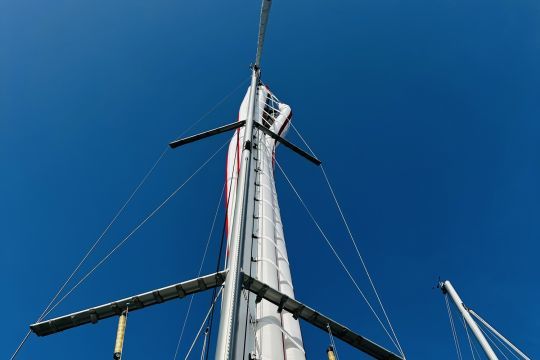
This is a ladder with rigid rungs suspended from the mast by a halyard. Inflatable bladders on each side and on the climber's back ensure the ladder's rigidity and the climber's safety.
We were able to test this model in real life on the mast of the 41-footer on which the inventor sails. Installation is simple: just take the ladder out of your bag, unroll it on deck and send it to the masthead.
To do this, we used the mainsail halyard. The ladder was therefore located behind the spreaders. But it can also be sent up the mast with a jib or spinnaker halyard. We also secured it longitudinally by hooking it to the shrouds with snap hooks. As a result, it is now integral with the rig.
Low pressure
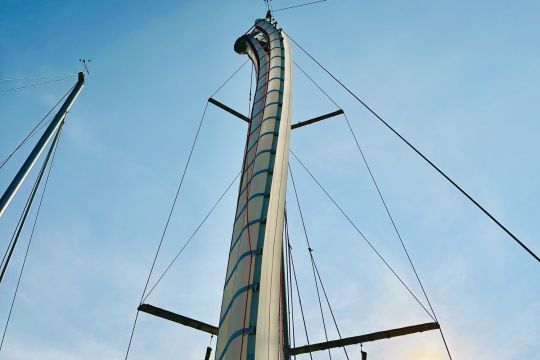
Once the halyard is properly tensioned, the ladder is fixed at the foot of the mast, and all we have to do is inflate the uprights. To do this, we used an electric pump, also used on board for the dinghy. No need for high pressure as with a paddle, the uprights are inflated to 4 PSI. This is enough to make them quite rigid.
There are exactly six struts. Two on each side for the stiles and two behind for the back support. In this way, the climber actually enters the ladder between the saddles. He's facing the ladder rungs and can't tip backwards, protected in his inflatable "cage". Climbing then becomes as easy as on a rigid ladder.
Sea-tested
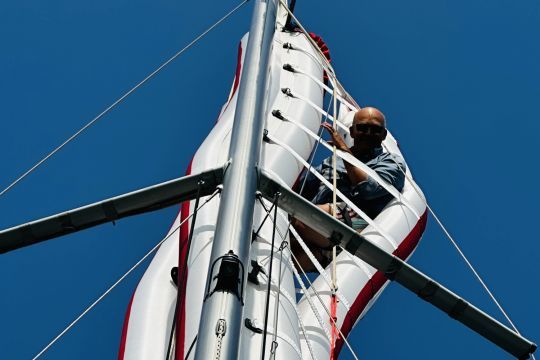
During our test run, we reached the masthead in a matter of seconds, no more tired than when climbing a conventional ladder. Any notion of vertigo is also erased by the reassuring environment of the ropes. The less adventurous or younger sailors can add the reassurance of an extra halyard if they wish. The inventor recommends it in any case.
Ladder installation takes just a few minutes, depending on the performance of the inflator. Solutions for rapid inflation by striking a "life raft"-type cylinder are currently being validated. To fold the ladder, simply roll it up from the bottom, having first opened the deflation valves located at the very top of the bladders to avoid any "air pocket" phenomenon. On a critical note, the ladder remains quite bulky when folded up, so you'll need to reserve a place for it on board, especially when it's intended for a mast exceeding 18m.
Available summer 2023
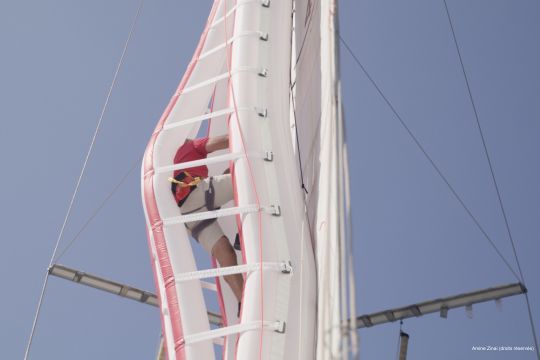
To operate, this ladder is adapted to the length of the mast. Prices vary according to length.
For quality construction using materials similar to those used in kite surfing and life rafts, expect to pay between ?3599 for a 30-foot sailboat and up to ?5699 for a 60-foot sailboat, prices discounted in July 2023 for the launch of the summer season.
